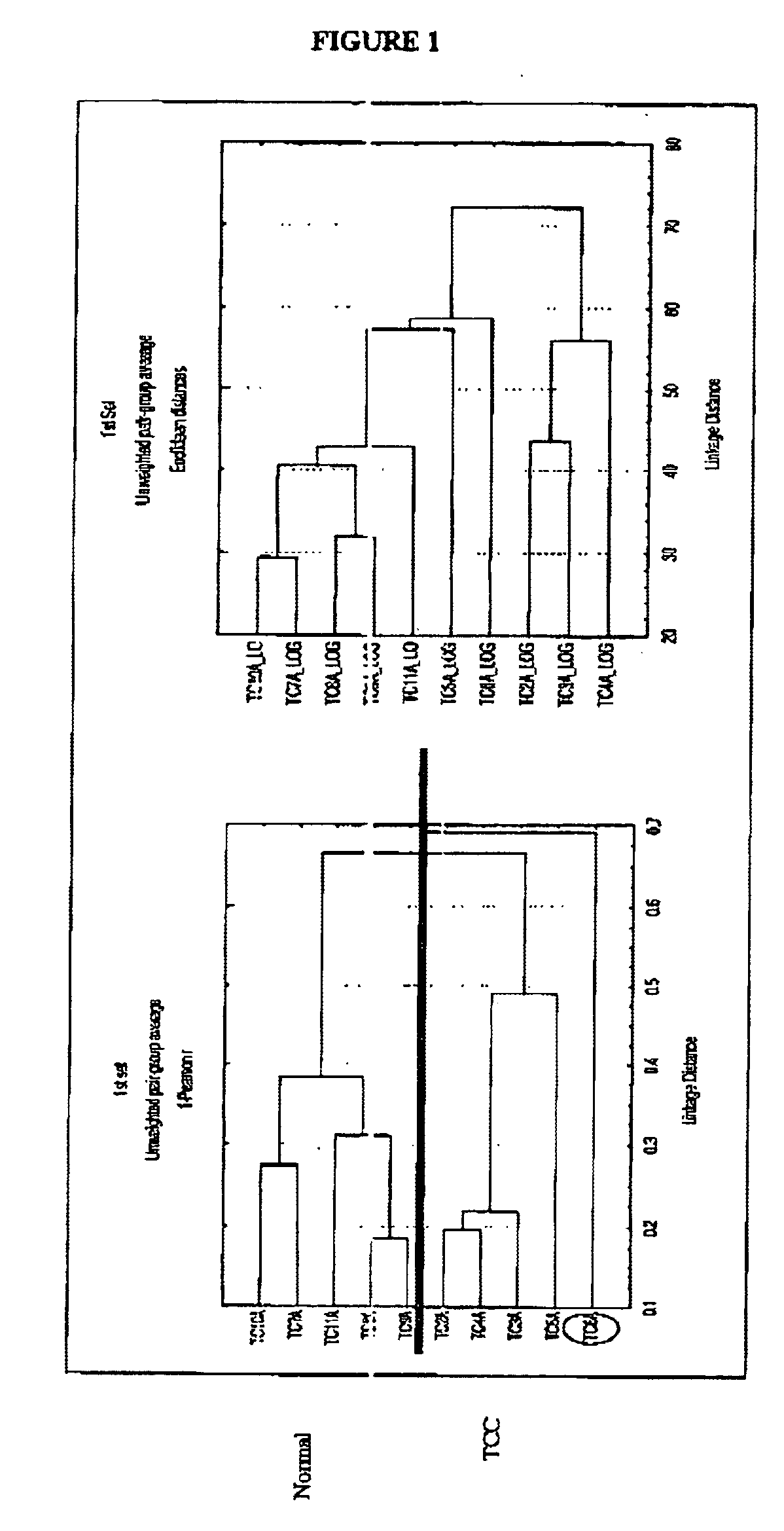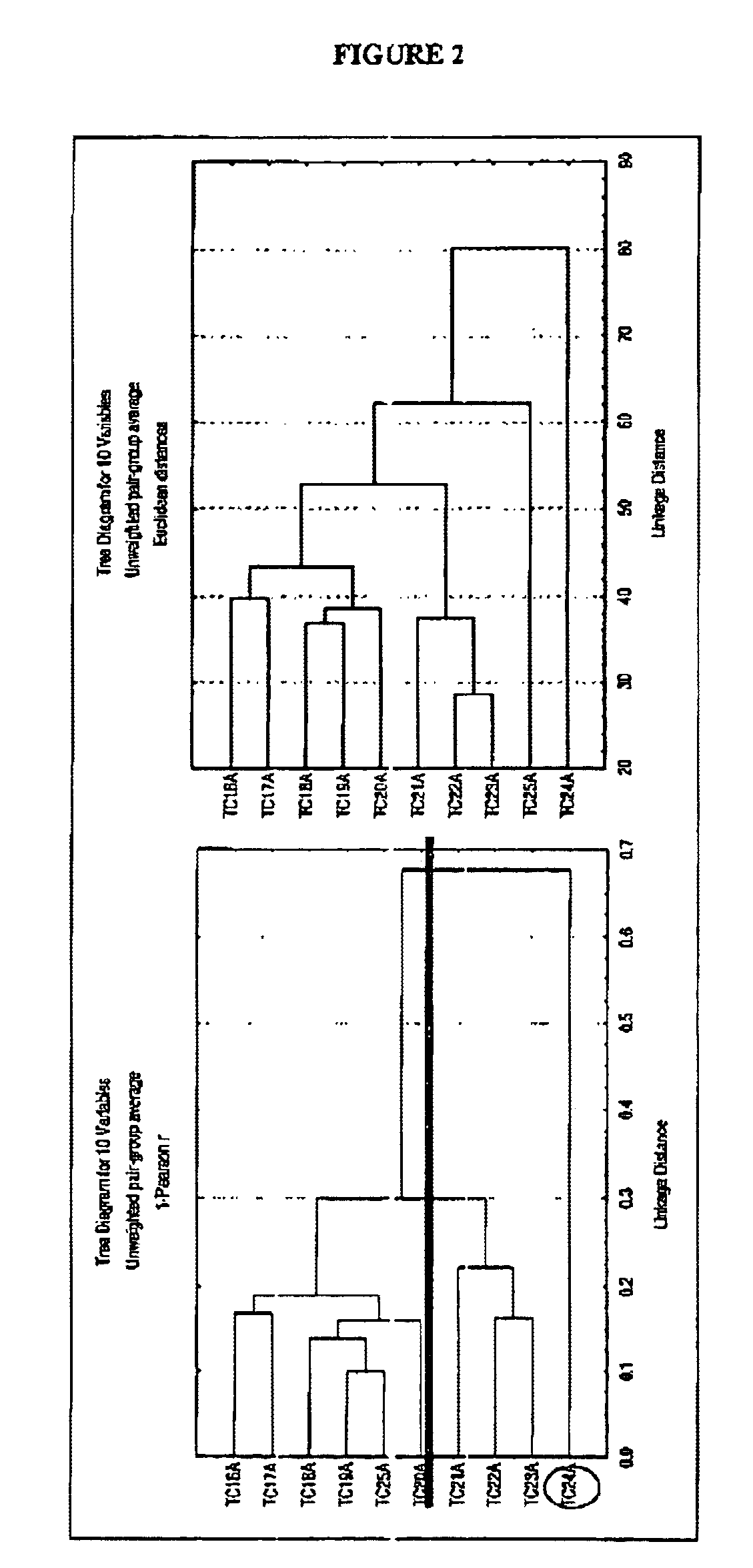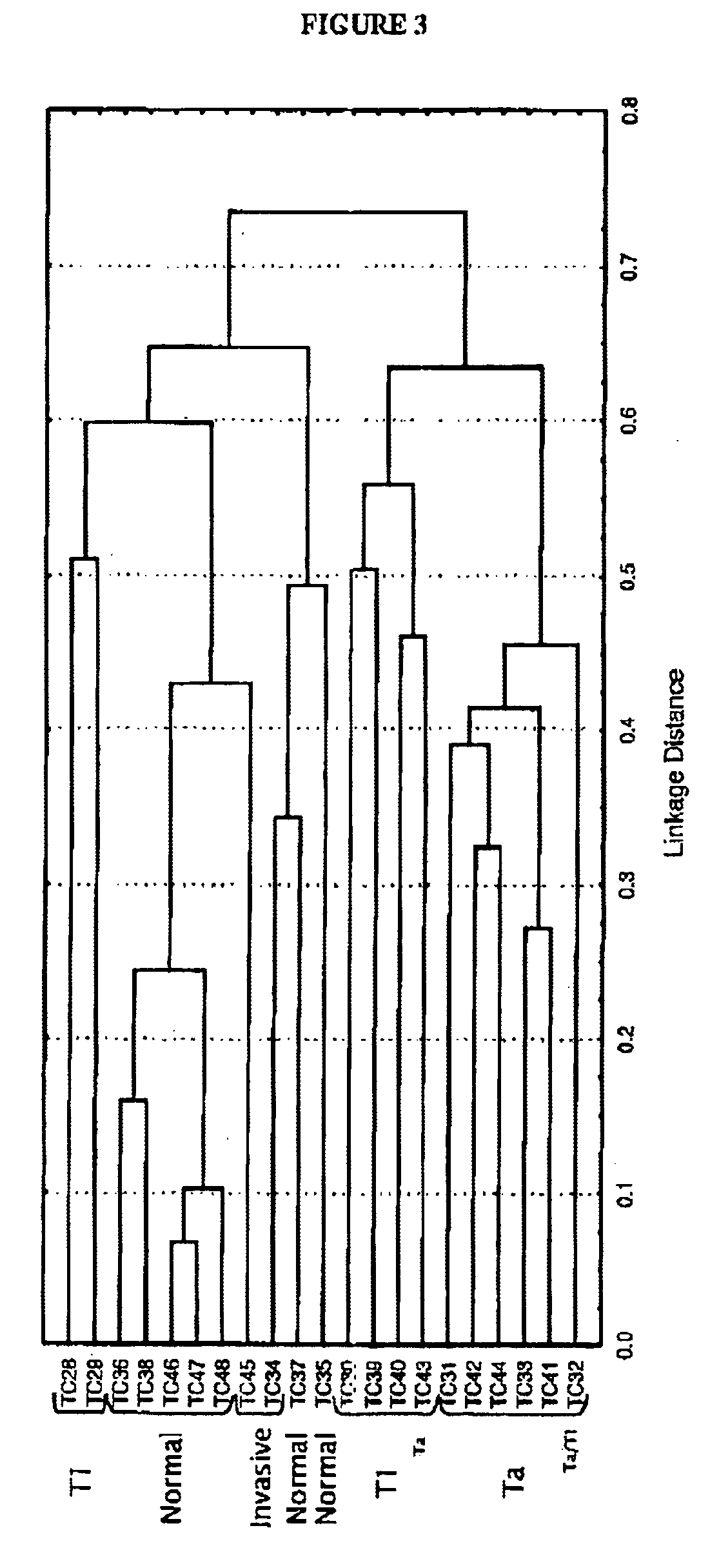Methods of diagnosing bladder cancer
a technology of polynucleotide sequences and bladder cancer, which is applied in the field of identification of polynucleotide sequences, can solve the problems of increased risk of bladder cancer, fewer patients, and often multifocal bladder carcinoma, and achieves high expression
- Summary
- Abstract
- Description
- Claims
- Application Information
AI Technical Summary
Benefits of technology
Problems solved by technology
Method used
Image
Examples
example 1
[0075]Methods of the Invention
[0076]A detailed description of the methods employed in the present invention is set forth in co-assigned U.S. patent application U.S. Ser. No. 09 / 534,661 filed on Mar. 24, 2000 now U.S. Pat. No. 6,403,316, corresponding to PCT patent publication number WO 00 / 56935 and incorporated herein by reference in its entirety. The method includes preparing cell fractionations; extracting intact total RNA from membrane bound polysomes and free polysomes; preparing cDNA probes from template RNA derived from the extracted polysomes; performing microarray-based comparison of the relative abundance of the different RNA species; analyzing the results; thereby identifying genes or clones encoding specifically membranal or secreted proteins.
[0077]Identification of cDNAs and genes encoding secreted or membranal encoding mRNAs is of major importance in TCC. More specifically, novel genes which mark the early stages of TCC and code for secreted proteins are the ultimate ma...
example 2
Polynucleotides and Diagnostic Applications
[0124]Utilizing the methods set forth above, the polynucleotides set forth in Tables 1 and 2 were identified and cloned as being differentially expressed in bladder cancer 41 hybridizations were compared.
[0125]The polynucleotides described in Table 1 are identified by clone number and accession number. This list includes sequences of known genes whose function in bladder cancer was heretofore unknown and which were now found to upregulated in bladder cancer. Corresponding nucleic acid sequences are provided in Table 3.
[0126]The polynucleotides described in Table 2 are identified by clone number. This list includes sequences of novel genes which have no identity to known proteins or genes in the gene databases. Corresponding nucleic acid sequences are provided in Table 4.
[0127]In both Tables 1 and 2, the differential expression pattern of the different hybridization probes is provided. In both Table 1 and 2, the genes listed were found to be...
example 3
[0131]In the present invention, the results of the 41 hybridizations were analyzed on the TCC microarray, in order to provide a statistically meaningful set of genes (which each include one of the polynucleotides identified) that can identify TCC samples and be used as a TCC marker set. As a result, a sub-set of twenty-two (22) potential molecular markers for non-invasive TCC was identified and validated using supervised statistical analysis methods. The 22 genes identified as potential markers (listed in Table 5) code for secreted factors, cytoskeletal and membranal proteins, all potentially suitable for the development of non-invasive diagnostic tests. This marker set of genes is described below, in Example 4, Section 5, entitled “Expression patterns, scores and significance values for 22 short-listed genes”, and related Tables C1 and C2. Thirteen (13) of these 22 polynucleotides are described in Example 2 (see Tables 1-4), and nine (9) are newly described in this Example...
PUM
| Property | Measurement | Unit |
|---|---|---|
| Volume | aaaaa | aaaaa |
| Electric charge | aaaaa | aaaaa |
| Electric charge | aaaaa | aaaaa |
Abstract
Description
Claims
Application Information
 Login to View More
Login to View More - R&D
- Intellectual Property
- Life Sciences
- Materials
- Tech Scout
- Unparalleled Data Quality
- Higher Quality Content
- 60% Fewer Hallucinations
Browse by: Latest US Patents, China's latest patents, Technical Efficacy Thesaurus, Application Domain, Technology Topic, Popular Technical Reports.
© 2025 PatSnap. All rights reserved.Legal|Privacy policy|Modern Slavery Act Transparency Statement|Sitemap|About US| Contact US: help@patsnap.com



